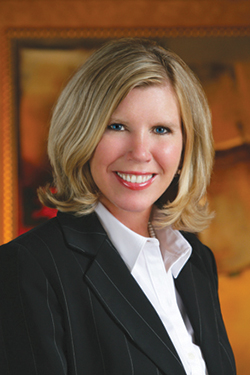
Having a strategic plan is a common best practice in successful organizations. The strategic plan is your road map to the future success of the organization. So assuming you have a strategic plan that isn’t sitting on the shelf collecting dust, what have you done about your “people plan” to support reaching your business goals? In other words, what are you doing to ensure that you have the right plan to support your strategy? In the HR world, we call this strategic workforce planning.
Consider that 75.3 million people were born in the United States between 1946 and 1964—the Baby Boomers—while 48.1 million were born in the U.S. between 1965 and 1976—the Gen Xers. The first boomers turned 65 on January 1, 2011, and though 32 percent have pushed back their retirement by several years, there is still an immediate talent gap in the workforce of 27.25 million people.
You may not consider this a crisis, but it is certainly a challenge that will impact most industries and organizations of all sizes. In 2010, Career Partners International, in collaboration with Dr. David DeLong, conducted a Maturing Workforce Survey. According to Dr. DeLong, “One of the most striking findings from the survey is that executives and managers have not made the connection between expected effects of an aging workforce and business impacts. Leaders clearly are concerned about the potential of lost capabilities and the increased likelihood of skill shortages, but responses show that leaders do not see a clear connection between those threats and resulting risks of increased product costs or decreased service delivery capabilities.”
This is why workforce planning is critical. There are both formal and informal methods for workforce planning. The key is to find a way that helps you identify and analyze what you are going to need in terms of the size, type and quality of workers to achieve your business objectives. Workforce planning should also help you determine the mix of experience, knowledge and skills required to get the right number of the right people in the right place at the right time.
So what can you do today? At a recent “Talent Wars” briefing, Marvis Meyers, vice president of training & organization development for AAIM Employers’ Association, identified five important strategies to focus on:
- Succession and workforce planning. Identify key roles that require a high level of skill, as well as the skills needed as they impact the strategic plan. Assess current talent for potential to fill those roles; then create a plan to develop or acquire talent to fill them.
- Talent retention. Create and maintain a culture that respects and rewards talent. Offer opportunities for growth and development; develop leaders that understand knowledge works.
- Recruiting excellence. Determine your recruiting philosophy. Do you want to promote from within, or hire externally? Recruit for tomorrow, not today. Know your employer “brand,” make your work experience transparent, develop a marketing strategy to target talent, and integrate recruiting with workforce planning and talent management.
- Knowledge management. Capture and share best practices for the entire organization. Ensure that data is relevant, current and consistent; effectively distributed; and available throughout the organization.
- Knowledge transfer. Methods include training, mentoring, job shadowing, apprenticeships, collaborative technology and many more. However, the key to success is having a culture that supports knowledge sharing and learning—one in which leaders and employees value learning, and it is recognized and rewarded.
While there is still a large amount of economic uncertainty and continued high unemployment, don’t let these issues mask your need to take a serious look at your current and future workforce. iBi

